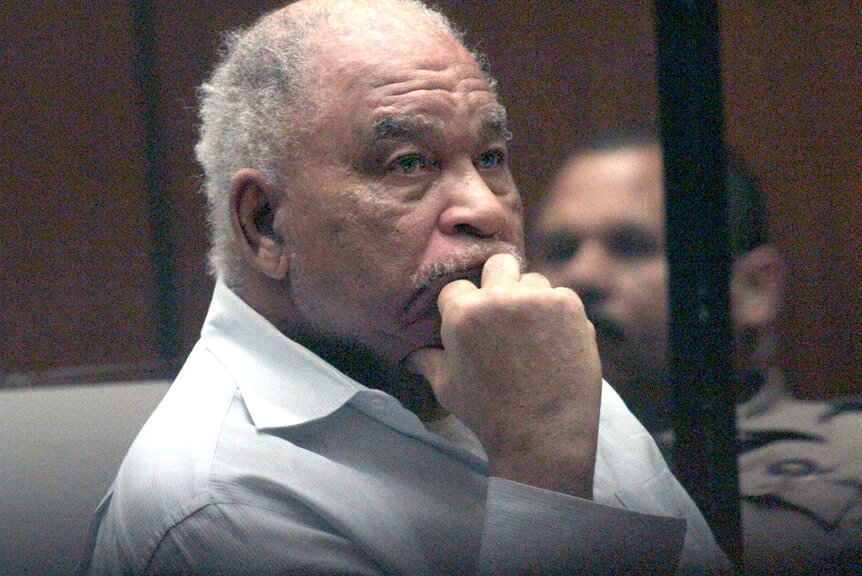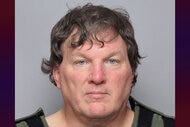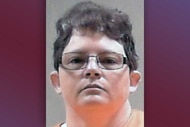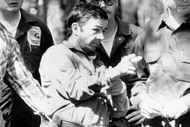Create a free profile to get unlimited access to exclusive videos, breaking news, sweepstakes, and more!
What Murder Did Serial Killer Sam Little Go To Trial For, Years Before Finally Facing Justice?
In the early 1980s, serial killer Sam Little was charged with murder, but he managed to evade conviction.
Samuel Little, considered by the FBI to be "the most prolific serial killer in U.S. history," committed heinous crimes against women for almost 40 years. Targeting women on the margins of society — sex workers, drug users, and those who were generally alone and vulnerable — Little allegedly murdered 93 victims across multiple states.
Although he was not convicted of murder until 2014, Little had prior run-ins with the law. He racked up nearly 100 arrests, including kidnapping, rape, and armed robbery, and served fewer than 10 years in prison, reported The New York Times.
Little was even put on trial for the murder of Patricia Mount in the early 1980s, but he ultimately walked free and continued his reign of terror for decades.
How did Little get away with the murder?
“Catching A Serial Killer: Sam Little,” streaming now Oxygen, explores how the calculated killer evaded capture for so long.
On Oct. 4, 1982, Melinda Rose LaPree was found murdered in Pascagoula, Mississippi. Her body was discovered in a heavily decomposed state, and no physical evidence could be salvaged from her remains.
Fellow sex workers, however, confirmed that on the night LaPree disappeared, she left with a man in a station wagon that matched Little’s description. Six weeks later, Little was pulled over by police in a traffic stop, and he became investigators’ number one suspect.
The witnesses identified Little in a photo lineup as the man who drove off with LaPree, according to “Catching A Serial Killer.” One woman named Lelia also accused Little of assaulting her.
Prosecutors, however, chose not to file charges against Little because there was no physical evidence linking him to the crime scene.
"The evidence was gone," Pascagoula Police Department Lt. Darren Versiga told “Catching a Serial Killer.” “She had been out in the elements, and the decomposition destroyed anything that we could have positively put him with Melinda LaPree."
Furthermore, the district attorney's office was not convinced that the testimonies of sex workers would be enough to indict Little.
“At that time frame, through societal ways, we just didn’t believe prostitutes when they cried rape,” Versiga told the Los Angeles Times in 2018.
The Pascagoula Police Department kept Little in custody for six months in hopes of building a stronger case against him.
During that time, Versiga spotted a bulletin from authorities in Gainesville, Florida, seeking information in a murder similar to LaPree’s slaying that took place just days before her death.
Patricia Mount was found dead and naked in a hayfield on Sept. 12, 1982. The night before, witnesses reported seeing her at a bar dancing with a man before they drove off together in a station wagon.
When the original case investigators, Alachua County Sheriff's Department Det. Greg Weeks and Sgt. Kenny Mack, heard from Pascagoula police that their cases aligned, the two traveled west to interview Little in jail.
Little denied ever seeing Mount and claimed he was in Mississippi at the time of the crime.
"[W]e were trying to get him to say something incriminating or a piece of information we wanted, but he's arrogant, no remorse whatsoever. Just a feeling he's pure evil," Mack told “Catching A Serial Killer.”
The Alachua case against Little, however, had one distinct edge over the Pascagoula investigation: hair samples that tied Little to the crime scene. A fiber analysis found that Mount's clothes had the same characteristics as hairs taken from Little’s head, according to the Associated Press.
"We had hair that we had removed off her clothes that were left at the crime scene, and that was subsequently examined by the Mississippi lab with known hair standards from Samuel Little," Mack said.
Little was extradited to face murder charges in the summer of 1983, and in January 1984, he stood trial. With eyewitness testimony, physical evidence, and Little’s shaky alibi, the prosecution seemed to have a strong case.
At trial, Little changed his alibi and admitted to dancing with Mount the night she was killed, and the defense argued his hair could have been transferred to her through casual contact.
The trial lasted only two days, and the jury took 30 minutes before acquitting Little.
Prosecutor Ken Herbert later called it a "weak case," and defense attorney John Kearns noted in his closing remarks there was “more doubt than there is fact,” according to the Gainesville Sun newspaper.
The Alachua detectives were devastated with the outcome: "It was terribly frustrating, and we knew he was going to kill again," Weeks said.
Little went on to employ a series of tactics to evade capture — acknowledging interaction with his victims while denying their murders, limiting his hunting grounds to high-crime areas, and living as a transient.
It would be decades before he faced any justice.
Little was ultimately found guilty of killing three women in the Los Angeles area in 2014 and given three life sentences, the Los Angeles Times reported. Since then, he has admitted to dozens of other murders.
To hear more, watch “Catching A Serial Killer: Sam Little" now on Oxygen.


































